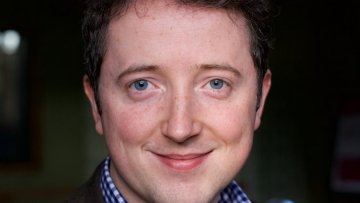11:00
Patrick Farrell, Early Career Research Fellow in Applied Mathematics in Oxford, together with colleagues from the Simula Research Laboratory and Imperial College London, has won this year's 2015 Wilkinson Prize.
11:00
Growth of homology torsion in residually finite groups
Abstract
I will report on recent progress towards understanding the growth of the torsion of the homology of subgroups of finite index in a given residually finite group G.
The cases I will consider are when G is amenable (joint work with P, Kropholler and A. Kar) and when G is right angled (joint work with M. Abert and T. Gelander).
Conjugacy classes and group representations
Abstract
One of the big ideas in linear algebra is {\em eigenvalues}. Most matrices become in some basis {\em diagonal} matrices; so a lot of information about the matrix (which is specified by $n^2$ matrix entries) is encoded by by just $n$ eigenvalues. The fact that lots of different matrices can have the same eigenvalues reflects the fact that matrix multiplication is not commutative.
I'll look at how to make these vague statements (``lots of different matrices...") more precise; how to extend them from matrices to abstract symmetry groups; and how to relate abstract symmetry groups to matrices.
The arithmetic of K3 surfaces.
Abstract
In the classification of surfaces, K3 surfaces hold a place not dissimilar to that of elliptic curves within the classification of curves by genus. In recent years there has been a lot of activity on the problem of rational points on K3 surfaces. I will discuss the problem of finding the Picard group of a K3 surface, and how this relates to finding counterexamples to the Hasse principle on K3 surfaces.



